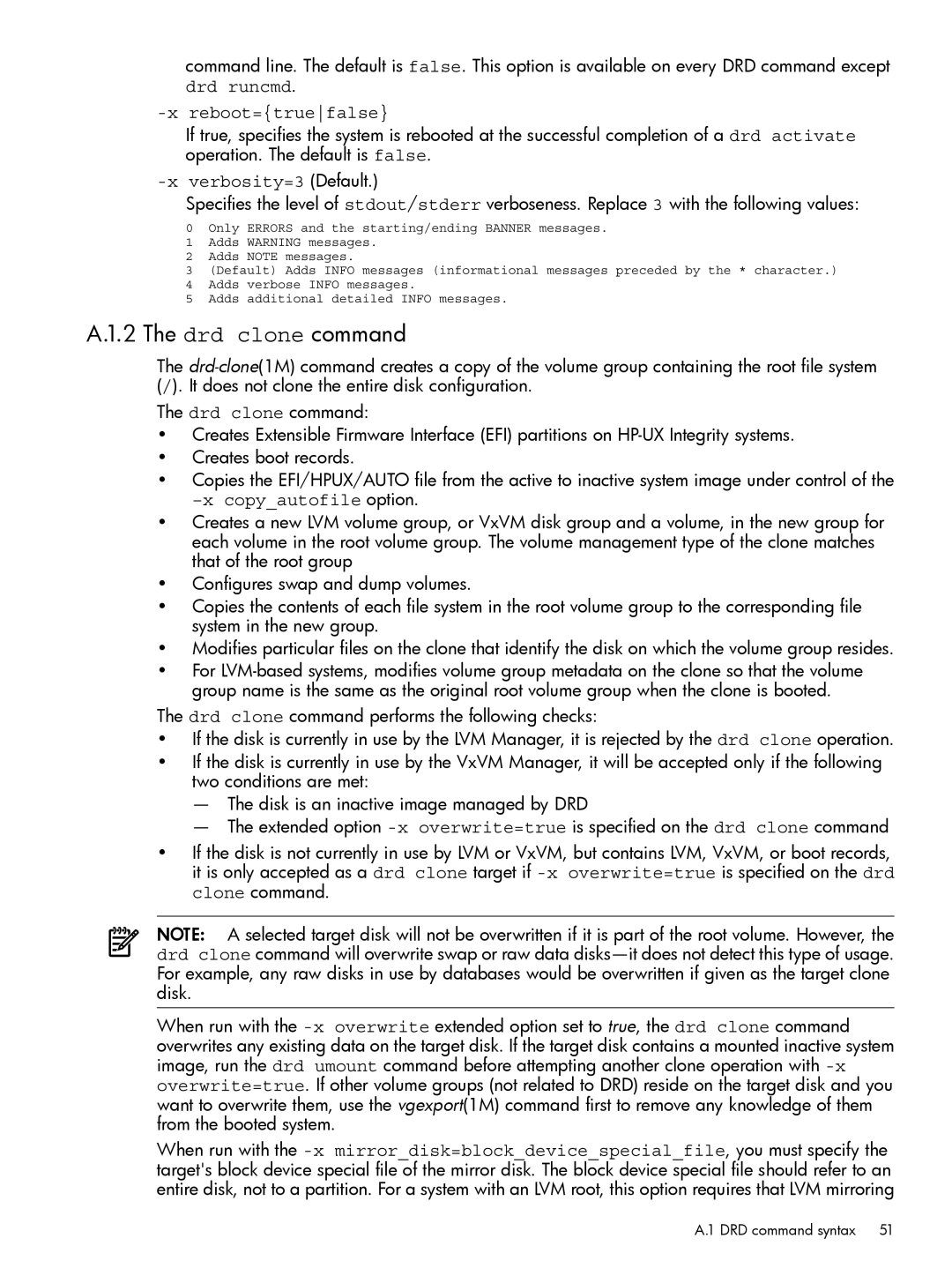
command line. The default is false. This option is available on every DRD command except drd runcmd.
-x reboot={truefalse}
If true, specifies the system is rebooted at the successful completion of a drd activate operation. The default is false.
-x verbosity=3 (Default.)
Specifies the level of stdout/stderr verboseness. Replace 3 with the following values:
0Only ERRORS and the starting/ending BANNER messages.
1Adds WARNING messages.
2Adds NOTE messages.
3(Default) Adds INFO messages (informational messages preceded by the * character.)
4Adds verbose INFO messages.
5Adds additional detailed INFO messages.
A.1.2 The drd clone command
The
The drd clone command:
•Creates Extensible Firmware Interface (EFI) partitions on
•Creates boot records.
•Copies the EFI/HPUX/AUTO file from the active to inactive system image under control of the
–x copy_autofile option.
•Creates a new LVM volume group, or VxVM disk group and a volume, in the new group for each volume in the root volume group. The volume management type of the clone matches that of the root group
•Configures swap and dump volumes.
•Copies the contents of each file system in the root volume group to the corresponding file system in the new group.
•Modifies particular files on the clone that identify the disk on which the volume group resides.
•For
The drd clone command performs the following checks:
•If the disk is currently in use by the LVM Manager, it is rejected by the drd clone operation.
•If the disk is currently in use by the VxVM Manager, it will be accepted only if the following two conditions are met:
—The disk is an inactive image managed by DRD
—The extended option
•If the disk is not currently in use by LVM or VxVM, but contains LVM, VxVM, or boot records, it is only accepted as a drd clone target if
NOTE: A selected target disk will not be overwritten if it is part of the root volume. However, the drd clone command will overwrite swap or raw data
When run with the
When run with the
A.1 DRD command syntax 51
